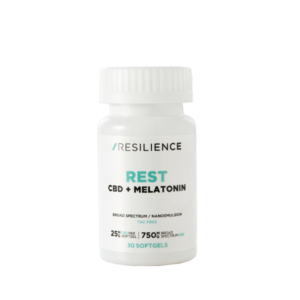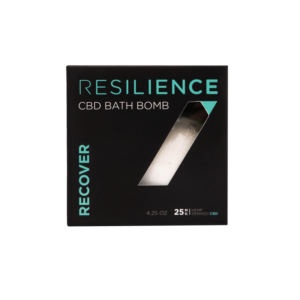
LET’S LEARN HOW CBD AND THE ENDOCANNABINOID SYSTEM WORK TOGETHER
Before the mid-1960s, back-boned animals having an Endocannabinoid System (ECS) probably, like so many other things from walking on the moon to gene manipulation, seemed like science fiction. But then Rafael Mechoulam, an Israeli organic chemist, published his cannabis research.
Dr. Mechoulam, now head of the Multidisciplinary Center for Cannabinoid Research at Hebrew University in Jerusalem, identified and was able to chemically characterize and synthesize tetrahydrocannabinol (THC), the main psychoactive cannabinoid in cannabis. After that, he went on to discover the corresponding endogenous cannabinoid, anandamide, that occurs naturally in the body. Thus, the Endocannabinoid System came to light.
This system is endogenous because it exists within the body, making endocannabinoids (not to belabor the point, but endogenous cannabinoids!). Cannabinoids that originate outside of the body, like the cannabis-derived phyto-cannabinoid, CBD (cannabidiol), are exogenous.
While Dr. Mechoulam and his team continued to study the ECS and cannabis, not many other scientists did. Cannabis was a taboo subject, illegal and, for research purposes, difficult to obtain legally in the United States. Its health properties, dating back centuries, were ignored while mythological stories of deteriorating brains-on-cannabis persisted.
Today, many are researching the ECS and especially the potential benefits of the phyto-cannabinoid, CBD.
WHAT IS THE ECS?
So, what is the ECS, this stealthy system that protects us – and our dogs; this system that keeps our bodies in balance, making sure that everything from brain to nervous system to stomach and skin keeps functioning properly?
It is made up of enzymes – proteins that act within cells as catalysts to regulate the biosynthesis, transport, and metabolic breakdown of endogenous cannabinoids; cannabinoid receptors; and endocannabinoid ligands that activate receptors, the two best known of these being anandamide and 2-AG.
Cannabinoid receptors, found throughout the body, include the CB1 receptor and the CB2 receptor.
CB1 receptors are found all over the body, but the majority are in the brain – in the cortex, basal ganglia, hippocampus, and cerebellum. When you think of muscle spasms, insomnia, or chronic pain, think of the CB1 cannabinoid receptor. They are all about movement and coordination, and feelings – both emotional and physical. Want to increase appetite? That is the CB1 receptor, as well.
CB2 cannabinoid receptors, in charge of inflammation and pain, are found in immune system tissue as well as in parts of the vascular system, and microglia. Microglial cells work in the central nervous system moderating immune responses. These cells (like white blood cells moving through the body) get rid of cellular waste and dead neurons.
HOMEOSTASIS
The ECS is working all the time to create homeostasis, or balance in the body. If your ECS system is not working properly, growing evidence suggests, you may end up with a chronic illness like fibromyalgia or IBS (Irritable Bowel Syndrome).
It is possible that people may suffer from migraines when they have what is now being called Clinical Endocannabinoid Deficiency (CECD); ECS hypofunction has also shown up in post-traumatic stress disorder studies. Clinical data supports the ECS and endocannabinoids like anandamide as potentially helping to decrease pain, and improve sleep, as well.
HOW DO CANNABINOIDS WORK?
“Our bodies produce endocannabinoids every day. These bind to receptors all over our bodies,” says clinical professor and neurosurgeon, Joseph Maroon. “It may be that people who don’t produce enough cannabinoids themselves are the ones who benefit from taking CBD, thus helping with pain and inflammation, and more,” Dr. Maroon posits.
How exactly does CBD, along with THC, the most researched of the over 65 known cannabinoids, possibly help those who do not produce enough cannabinoids? Cannabidiol (CBD) is a phyto-cannabinoid, meaning a natural complex chemical found in the cannabis plant.
It was once thought that CBD worked by directly attaching to CB1 and CB2 receptors, but ongoing research, including a study published in the Journal of Experimental Medicine, suggests that in mice and rats, CBD can not only bind, but can work as a kind of promoter, directing the body to use and produce more of its own cannabinoids.
Rather than binding directly to CB1 and/or CB2 receptors, this cannabinoid also can be an influencer. Various signaling systems, ECS molecular pathways if you will, including receptors like the serotonin receptor, conceivably respond to CBD at a cellular level, producing a range of physiologic effects. In a 2017 paper, Mayo Clinic neurologist Eugene L. Scharf, found that CBD had more than 65 molecular targets.
ANANDAMIDE TO THE RESCUE!
Ligands activate cannabinoid receptors. Cannabinoids can be endogenous (endocannabinoids); plant based (phyto-cannabinoids like cannabidiol, aka CBD); or synthetic, made in a lab. Once upon a time, way back when Dr. Mechoulam was trying to figure out why our bodies have cannabinoid receptors that can bind with phyto-cannabinoids like the THC that he had identified, he went on to discover THC’s ligand analogue – anandamide, the endocannabinoid that we naturally produce.
Our bodies – and our dogs’ bodies – are always working to maintain homeostasis – balance. That is why anandamide is created – on demand – and bound to the body’s CB receptors – to give us balance, both mental and physical. Cells perform optimally – at their best – when they are in balance.
It is thought that both THC and anandamide bind to CB1 receptors in the brain, impacting our moods and emotional behavior. THC takes much longer to degrade so it is active for a longer time than the more fragile molecules of anandamide.
Enter CBD, which, here, does not bind with receptors, but probably slows down the degradation of anandamide, the endogenous cannabinoid, by inhibiting the action of fatty acid amide hydrolase (FAAH). CBD probably allows anandamide, much less potent than THC, to bind for a longer time, keeping the body in balance.
This is important because it has the potential to make those with an endocannabinoid system feel better longer – without the high of THC.
It was once believed that a flood of endorphins to the brain created the high that we feel when we, for example, exercise. Not so according to recent research out of Europe; credit goes to anandamide which, unlike endorphins, can go through the blood-brain barrier and bind with receptors there and in the central nervous system.
In Sanskrit, Ananda means bliss or joy and as rigorous exercise increases the level of anandamide in the body, there is an experience of bliss and that euphoric feeling that strenuous exercise brings.
CBD, by possibly stopping the degradation of anandamide, may help to keep this feeling going. Not too much and not too little, but just the right amount to ensure a good mood and a sharp brain, little inflammation or pain, and a good appetite.
And speaking of appetite, one last note on anandamide: it is found in chocolate! Moral: take your CBD and if you are human, eat chocolate. If you are a dog, well, no chocolate for you. So sorry.
While chocolate is toxic for dogs, taking Resilience CBD oil every day may lead to the body’s naturally occurring anandamide delivering optimal benefits!
WHO USES CBD? AND WHY?
In a Harris Poll of more than 2000 people in the U.S., more than 85% knew about CBD and more than one in five of those people had experience with CBD. For more than half of the users, it was a stress and anxiety reducer. CBD was used to help relax, but an almost equal number of people used it as a pain reliever, whether that pain was chronic and/or whether it originated in muscles or joints.
Those surveyed also mentioned migraine relief and relief from nausea and menstrual symptoms.
CBD, little mentioned a few years ago, is now a word-of-mouth phenomenon. People hear about its potential health benefits from health care practitioners, friends, and relatives and try it. When they feel there has been a possible benefit, they begin to consider it for their dogs who may suffer from anything from age-related issues like arthritis to anxiety.
The opposite also happens: Someone suggests CBD oil for a dog and soon the dog’s owner wants their own CBD oil! One thing that dog owners know is that dogs are not influenced by what people say.
You cannot tell a dog that CBD will be beneficial to their health and then say that the power of suggestion was at work when the dog shows improvement. When older dogs who found it too painful to climb stairs begin, after taking CBD, to climb stairs, owners can see the return of vitality and the potential benefits of CBD.
HOW CBD MAY HELP WITH PAIN AND INFLAMMATION
It is now believed that most chronic conditions, uncomfortable for both people and pets, are caused by inflammation and that the ECS plays a role in regulating pain and inflammation. That both CB1 and CB2 receptors have been found on immune cells supports the importance of endocannabinoids in helping to regulate the immune system.
The immune system uses CB2 receptors to manage pain and inflammation. Anandamide, discussed above, is one compound associated with regulating pain and inflammation, and CBD conceivably can cause the body to produce, among other compounds, anandamide.
While infrequent bouts of inflammation may be treated with an NSAID such as ibuprofen, chronic inflammation is much harder to treat in the long term. The European Journal of Pain offered a study that used animals to show that CBD has the potential to help lower pain and inflammation caused by arthritis. The CBD, in this case, was applied topically. In another study, CBD is said to have calmed inflammatory and neuropathic pain.
CBD HELPS THE BRAIN
The hippocampus, the part of the brain thought to be in charge of emotion, memory, and the autonomic nervous system, has neural cells that can generate new neurons. This is called neurogenesis, and nascent studies suggest that cannabinoids like anandamide may act on CB1 receptors, bind with them, and regulate not just mood, but neurogenesis.
Creating new nerve cells in the brain is what keeps the brain functioning. Therefore, while the ligand anandamide is helping to keep a balanced mood and decreasing fear levels, it also may be aiding our brains in neurogenesis.
More good news for the brain: CBD has potential anti-oxidative properties which may help with oxidative neurological disorders like cerebral ischemia where the brain is deprived of oxygen. (This from research by Dr. Mechoulam and others with whom he worked.)
When the body is properly encouraged to correct itself, it responds. It works to revert to a place of balance. One study involving mice and rats found that CBD may have helped as chronic inflammation and pain was significantly reduced in some of the participants, which would also be of benefit to those with addiction due to pain.
In a 2010 study from Brazil, mice were divided into three groups: those who received CBD, those who were given an antidepressant, and those who received a placebo. Sorry to say, the mice then were exposed to extremely stressful conditions and their levels of ‘despair’ tested. Those in the CBD group and the antidepressant group fared better than those who received the placebo. Though the method may be upsetting, the knowledge that CBD is as potentially helpful as an antidepressant is useful information for those suffering from depression.
ABOUT THC
CBD, unlike the psychotropic THC, can be given in high doses. CBD also most likely modulates CB1 receptors, interfering with THC’s ability to entirely bind. Therefore, CBD has the potential to work against the intoxicating properties of THC.
This is just one reason that a full spectrum CBD oil may work well for both humans and dogs. Not only does a full spectrum oil offer all the advantages found a full-plant oil, where all of the biomolecules – the more than 65 to 100 cannabinoids, the terpenes and the flavonoids – work together, but it offers CBD’s potentially modulating effect on THC.
Resilience CBD’s Full Spectrum CBD oil has less than the legal limit 0.3% THC, and, again, that small amount offers immense benefit without a high. Both dog and dog owner can feel safe.
Growing hemp plants which contain less than 0.3% THC was made legal by the Federal Farm Bill. Oils with higher THC content are legal only in a few states and in Washington, D.C.
YOUR DOG IS IMPORTANT TO US
Clearly, the ECS helps the body to function at its best. Research evidence is mounting and meeting the quantity of anecdotal evidence available. We feel sure that further studies will show that CBD has the potential to influence pain and inflammation and a host of other disorders from anxiety to allergic reactions. The more we know about the ECS and cannabinoids, the less magical CBD’s potential to help becomes.
Because your dog is important to us, we want your dog to use a CBD oil that is organically grown in the U.S. from non-GMO cultivars and is third-party tested. We want your dog to experience a CBD oil that is always consistent in its quality. We want your dog to experience the benefits of Resilience CBD oil.






